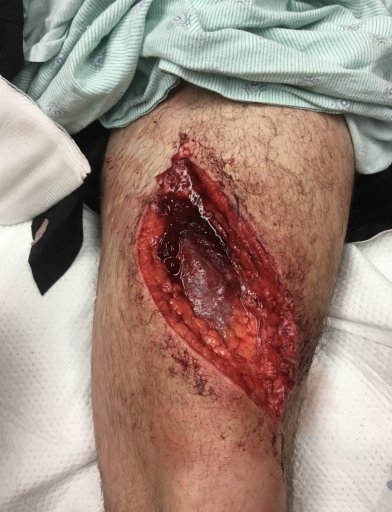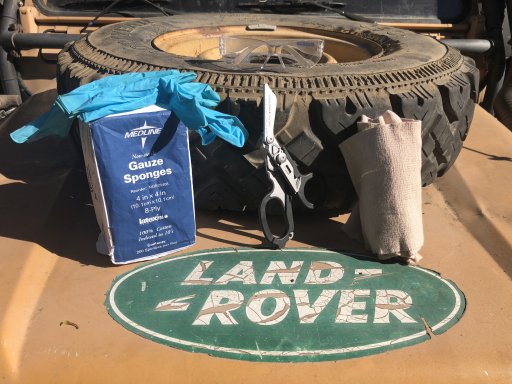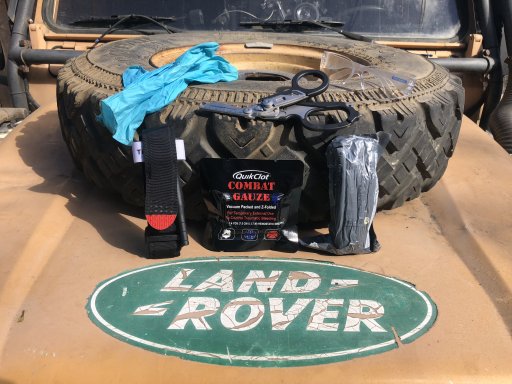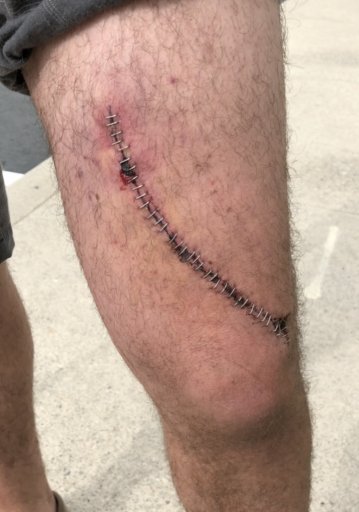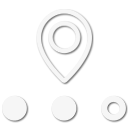
Traveler II
Hello Everyone!
In addition to the trauma scenarios were the goal is to practice going through a full assessment of the scene and patient, I will be putting out threads with specific issues, like this one that will address a large open wound. Part of the post is to show you what you should/could use to address the injury, part will be to discuss options in relation to gear and treatment, and lastly by being exposed to real pictures of real injuries my hope is that the shock and awe of seeing them decreases for you so that if you are ever faced with something like this you will be less disturbed by the injury and more focused on the care of the patient. As always, if you have any questions please reply here or message me.
Chris
This is an actual chainsaw injury that came into my hospital when I was on call. In this case there was no active arterial bleeding, just a little oozing from the soft tissue and muscle. We did not apply a tourniquet, just packed the wound with Quikclot and I took the patient to the operating room for a washout and closure. They were released from the hospital the next day and at the two week follow up could walk without crutches.
For this post, we will pretend that this occurred while out in the middle of nowhere while the patient was trying to clear a trail. Following the standard procedures of scene assessment and then the ABCs the first step would be to make sure the scene is safe for the rescuers and the patient. This might include making sure the chainsaw is off, that whatever was being cut will not fall on the patient or rescuers, and that no secondary injuries can occur to the patient. Once this is done it is safe to approach the patient and administer care. In all cases, you should address massive bleeding first, then the Airway and Breathing and then once this is done move on to looking for other injuries by exposing the patient (Disability and Exposure/Environment). We won't address or focus on those in this scene.
1st Situation: Unsafe scene with obvious massive bleeding
In this case I would rapidly approach the patient and apply a tourniquet as high above the injury in the groin as possible and then move the patient to a safe area where more definitive care can be done. If you do not have a tourniquet you can try to apply direct pressure to the groin which should occlude the femoral artery but if you have to move the patient it would be impossible to apply enough pressure and move the patient at the same time. In this case you can assess the Airway and Breathing while approaching by calling out to see if they can answer. If the patient can talk then the Airway and Breathing are ok for now. Once the patient is cleared into a safe area, the wound should be exposed, here is where your trauma shears come in to play, and packed with gauze. Quikclot is my choice but regular gauze is fine and then a pressure dressing should be applied. For this I would use an Israeli Trauma bandage but again, a regular ACE wrap is fine. This wound should not be closed in the field. The patient will need to be transported to a hospital. Remember to cover the patient with a blanket during transport to help treat shock.
2nd Situation: Safe scene with obvious massive bleeding
Here I would apply the tourniquet without moving the patient and then start my assessment and follow the same protocol as above.
3rd Situation: Unsafe scene without obvious bleeding
Assess the Airway and Breathing as you walk up to the patient. Here I would move the patient to safe area and then assess the wound by exposing it with my trauma shears and packing it with Quikclot or other gauze and wrap with a pressure dressing. I would not use a tourniquet in this setting unless my packing and pressure dressing failed (blood soaked through). I would then evacuate the patient and monitor for shock.
4th Situation: Safe scene without obvious bleeding
Same as the 3rd situation but I wouldn't move the patient right away.
Take home points:
1. Make sure the scene is safe before rendering definitive care.
2. Tourniquets are perfect for uncontrolled or massive bleeding that needs to be addressed immediately. They are applied as high as possible on the limb that is injured and as tight as possible. If the injury is lower on the limb, you can try to apply a second tourniquet just above the injury and release the one higher up. If you do this I would leave the first tourniquet in place but loose and ready to tighten if the bleeding returns.
3. Do not try to wash the wound or close the wound in the field for a wound this size and depth. Pack and apply pressure and get to a hospital
4. Continue to run through the ABC's even after the wound is treated.
5. Do not be afraid to try something else if the first thing doesn't work (adding a tourniquet or a pressure dressing, adding a second tourniquet, etc)
So....are you and your kit prepared for this?
In addition to the trauma scenarios were the goal is to practice going through a full assessment of the scene and patient, I will be putting out threads with specific issues, like this one that will address a large open wound. Part of the post is to show you what you should/could use to address the injury, part will be to discuss options in relation to gear and treatment, and lastly by being exposed to real pictures of real injuries my hope is that the shock and awe of seeing them decreases for you so that if you are ever faced with something like this you will be less disturbed by the injury and more focused on the care of the patient. As always, if you have any questions please reply here or message me.
Chris
This is an actual chainsaw injury that came into my hospital when I was on call. In this case there was no active arterial bleeding, just a little oozing from the soft tissue and muscle. We did not apply a tourniquet, just packed the wound with Quikclot and I took the patient to the operating room for a washout and closure. They were released from the hospital the next day and at the two week follow up could walk without crutches.
For this post, we will pretend that this occurred while out in the middle of nowhere while the patient was trying to clear a trail. Following the standard procedures of scene assessment and then the ABCs the first step would be to make sure the scene is safe for the rescuers and the patient. This might include making sure the chainsaw is off, that whatever was being cut will not fall on the patient or rescuers, and that no secondary injuries can occur to the patient. Once this is done it is safe to approach the patient and administer care. In all cases, you should address massive bleeding first, then the Airway and Breathing and then once this is done move on to looking for other injuries by exposing the patient (Disability and Exposure/Environment). We won't address or focus on those in this scene.
1st Situation: Unsafe scene with obvious massive bleeding
In this case I would rapidly approach the patient and apply a tourniquet as high above the injury in the groin as possible and then move the patient to a safe area where more definitive care can be done. If you do not have a tourniquet you can try to apply direct pressure to the groin which should occlude the femoral artery but if you have to move the patient it would be impossible to apply enough pressure and move the patient at the same time. In this case you can assess the Airway and Breathing while approaching by calling out to see if they can answer. If the patient can talk then the Airway and Breathing are ok for now. Once the patient is cleared into a safe area, the wound should be exposed, here is where your trauma shears come in to play, and packed with gauze. Quikclot is my choice but regular gauze is fine and then a pressure dressing should be applied. For this I would use an Israeli Trauma bandage but again, a regular ACE wrap is fine. This wound should not be closed in the field. The patient will need to be transported to a hospital. Remember to cover the patient with a blanket during transport to help treat shock.
2nd Situation: Safe scene with obvious massive bleeding
Here I would apply the tourniquet without moving the patient and then start my assessment and follow the same protocol as above.
3rd Situation: Unsafe scene without obvious bleeding
Assess the Airway and Breathing as you walk up to the patient. Here I would move the patient to safe area and then assess the wound by exposing it with my trauma shears and packing it with Quikclot or other gauze and wrap with a pressure dressing. I would not use a tourniquet in this setting unless my packing and pressure dressing failed (blood soaked through). I would then evacuate the patient and monitor for shock.
4th Situation: Safe scene without obvious bleeding
Same as the 3rd situation but I wouldn't move the patient right away.
Take home points:
1. Make sure the scene is safe before rendering definitive care.
2. Tourniquets are perfect for uncontrolled or massive bleeding that needs to be addressed immediately. They are applied as high as possible on the limb that is injured and as tight as possible. If the injury is lower on the limb, you can try to apply a second tourniquet just above the injury and release the one higher up. If you do this I would leave the first tourniquet in place but loose and ready to tighten if the bleeding returns.
3. Do not try to wash the wound or close the wound in the field for a wound this size and depth. Pack and apply pressure and get to a hospital
4. Continue to run through the ABC's even after the wound is treated.
5. Do not be afraid to try something else if the first thing doesn't work (adding a tourniquet or a pressure dressing, adding a second tourniquet, etc)
So....are you and your kit prepared for this?
Attachments
-
1.6 MB Views: 322
-
2.6 MB Views: 305
-
2.5 MB Views: 272

